The sun was shining and my wife and I went out for a walk we had long intended to do, round the perimeter of a local Common. Nothing dramatic, but it was a walk we had not done before, despite the common itself being very familiar. My intention was to look for wide vistas with subtle colours and clouds in the blue sky, for which I planned to use an OM-5 (yes a modern mirrorless). After walking a few yards, I realised that I had left the memory card in my computer’s SD slot, and the holder that should have contained a spare card for emergencies such as this was empty.
Aside from my phone, which I don’t enjoy using as a camera, the only option was to use the OM4Ti (along with 24mm, 50mm and 100mm lenses) that I had also brought with me, just in case anything suitable turned up on which I could use the last few frames on the roll. That changed the trip, photographically, because the pictures I had in mind were just not suitable for grainy, monochrome film. It was a matter of looking for images very different from the ones I had in mind. I enclose five of the resulting ones. Developed in Rodinal 1:50 for 10 mins at 20C. The fallen tree and the pollarded willows are with the 24mm and the farm and reflections with the 100mm. I am not sure whether the one of sheep was 24mm or 50mm.
My first shot was of a wonderful fallen tree, which cried out for a monochrome image and with plenty of detail that would be fine with the grain. Then some of the clouds that I had hoped to capture in colour and some farm buildings in the distance, and finally some shots of a fishpond.
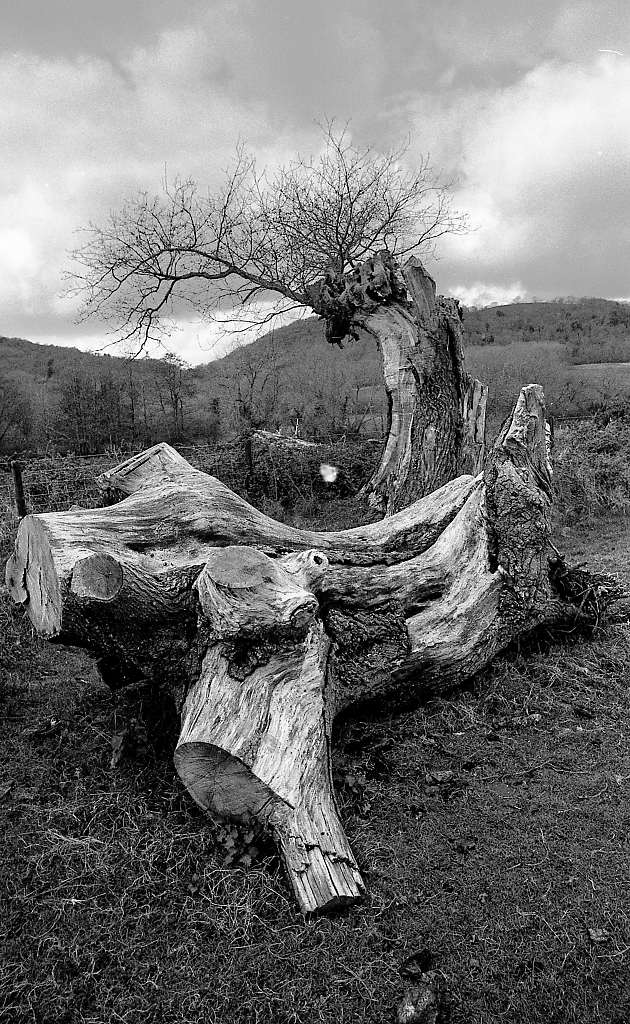
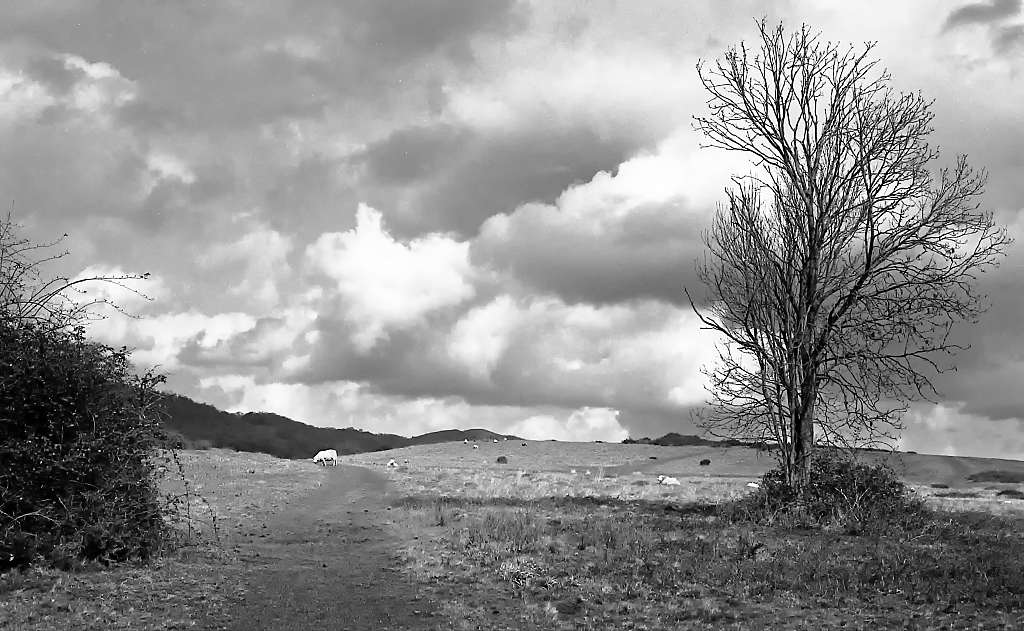
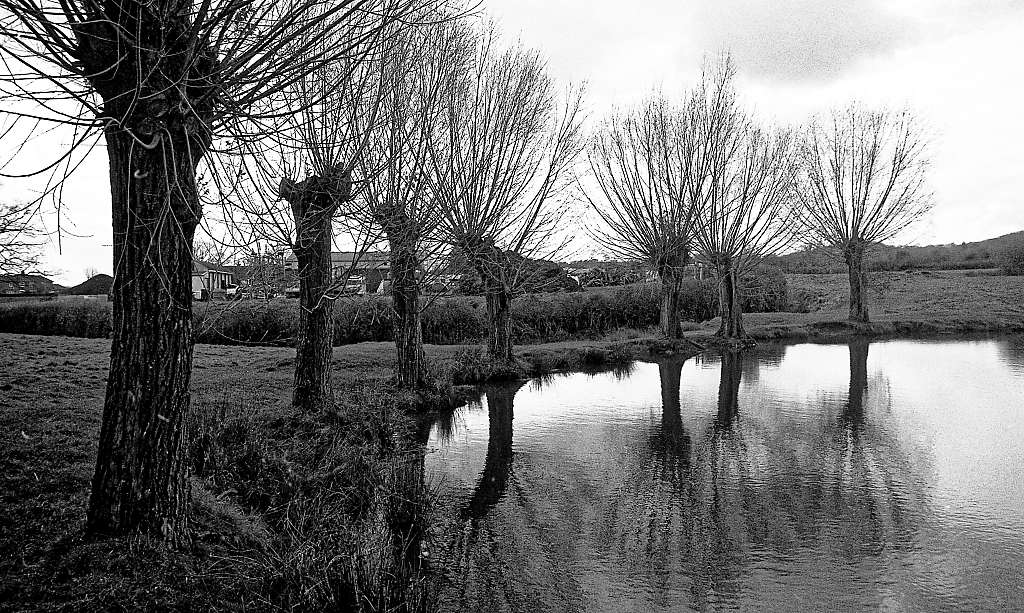
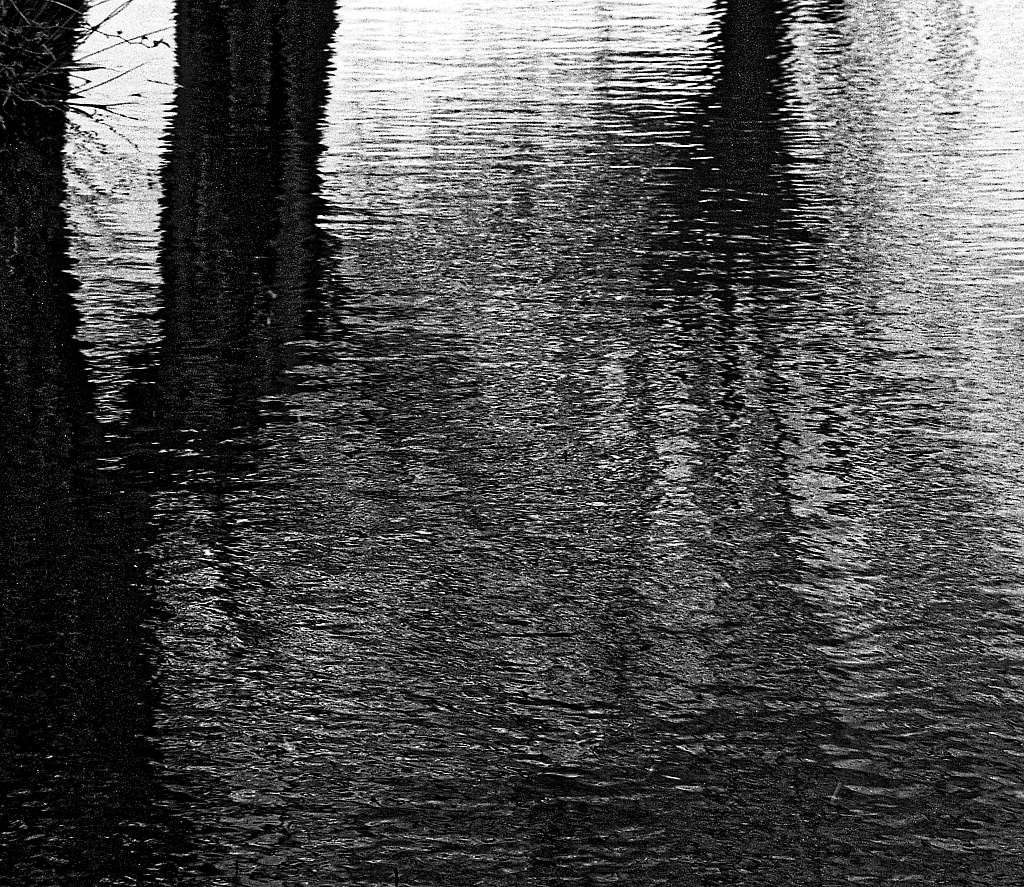
What lessons have I drawn from this? The obvious one is to check cameras more carefully before setting out. But apart from that, it taught me that, even though I could not get the shots I had in mind, there was still potential there. The limitation of these shots, in my view, is the composition rather than that they are in mono. They succeed in turning what was a bright sunny day with fluffy clouds into something far darker but perhaps more dramatic. Perhaps the limitation imposed by the film was an advantage.
Why the film box, not the camera as the lead photo? I already knew that the OM4Ti is more than a capable camera, and if I had colour film in it, I am sure I could have got shots closer to the ones I imagined before I set out. The limitation was having the Agfaphoto B&W film in it. This isn’t visible in these low-res images, but aside from its being B&W, but I find one of the film’s limitations to be the grain. When the images are scanned and adjusted to bring out the contrast, I find myself wanting to use de-noise software more heavily than I would normally want to do. So a third lesson is that I should experiment more with other development techniques (this was Rodinal 1:50 for 10 minutes, with agitation every minute) or even try some other films.
P.S. Here is the missing 5th image. Sorry it was omitted first time.
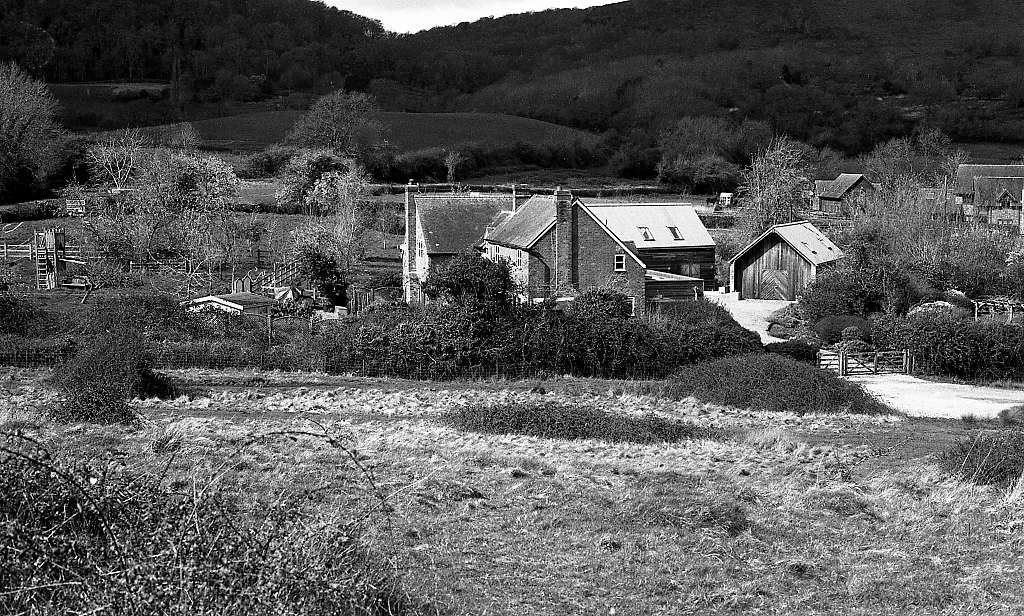
Share this post:
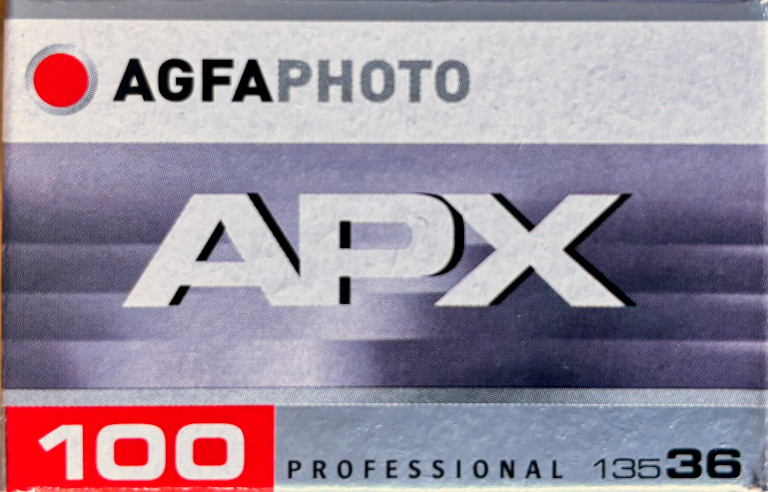








Comments
Gary Smith on 5 Unintended frames with Agfa APX100 (and an OM4-Ti)
Comment posted: 07/06/2024
I quite like that first tree shot and the ones of the water. I've never used Agfa film so I can't compare it to the Tri-X that I prefer. In my recent film shoots I have always found that I want to run the scans through a denoise pass.
Comment posted: 07/06/2024
Jeffery Luhn on 5 Unintended frames with Agfa APX100 (and an OM4-Ti)
Comment posted: 07/06/2024
Those are beautiful full scale prints! The first image is my favorite. It conveys the mass of the fallen tree, skillfully placed into a dramatic composition. Well done. Do you ever get good shots like that and lament not having shot them on a larger format? I do. I only use 35mm when I have to. I only make silver prints in trays, avoiding the scanning of film. While grain can communicate the grit of life, fine grainless detail has its place in rendering subjects worthy of close inspection. That's just my opinion. I have a 6x9 Zeiss folding camera that I can carry in the pocket of my jacket. Slow to use, but tack sharp. In the end, content beats technique, but the stumbling block of grain and sharpness is easily overcome with a big negative. Someone with your good eye can make that really work well.
Comment posted: 07/06/2024
John Squillace on 5 Unintended frames with Agfa APX100 (and an OM4-Ti)
Comment posted: 07/06/2024
Comment posted: 07/06/2024
Art Meripol on 5 Unintended frames with Agfa APX100 (and an OM4-Ti)
Comment posted: 07/06/2024
Comment posted: 07/06/2024
Comment posted: 07/06/2024
Michael Dimmitt on 5 Unintended frames with Agfa APX100 (and an OM4-Ti)
Comment posted: 07/06/2024
I unsubscribed from the “Four Shots with” group long ago.
Comment posted: 07/06/2024
Comment posted: 07/06/2024
Tony Warren on 5 Unintended frames with Agfa APX100 (and an OM4-Ti)
Comment posted: 07/06/2024
Comment posted: 07/06/2024
Geoff Chaplin on 5 Unintended frames with Agfa APX100 (and an OM4-Ti)
Comment posted: 08/06/2024
Rodinal is high acutance = prominent grain. Fine grain developer = low acutance. I'd suggest sticking with Rodinal, try stand development, and try fine grain films such as RPX25 or some of Adox's offerings or, more expensively, PanF, delta 100 or acros.
Comment posted: 08/06/2024
Comment posted: 08/06/2024
Comment posted: 08/06/2024
Ibraar Hussain on 5 Unintended frames with Agfa APX100 (and an OM4-Ti)
Comment posted: 08/06/2024
Agfaphoto APX100 is a lovely sharp fine grained smooth high resolution film in my experience using Bellini Duo Step (Diafine)
I wouldn’t use Rodinal for fine grain.
Ian R on 5 Unintended frames with Agfa APX100 (and an OM4-Ti)
Comment posted: 09/06/2024